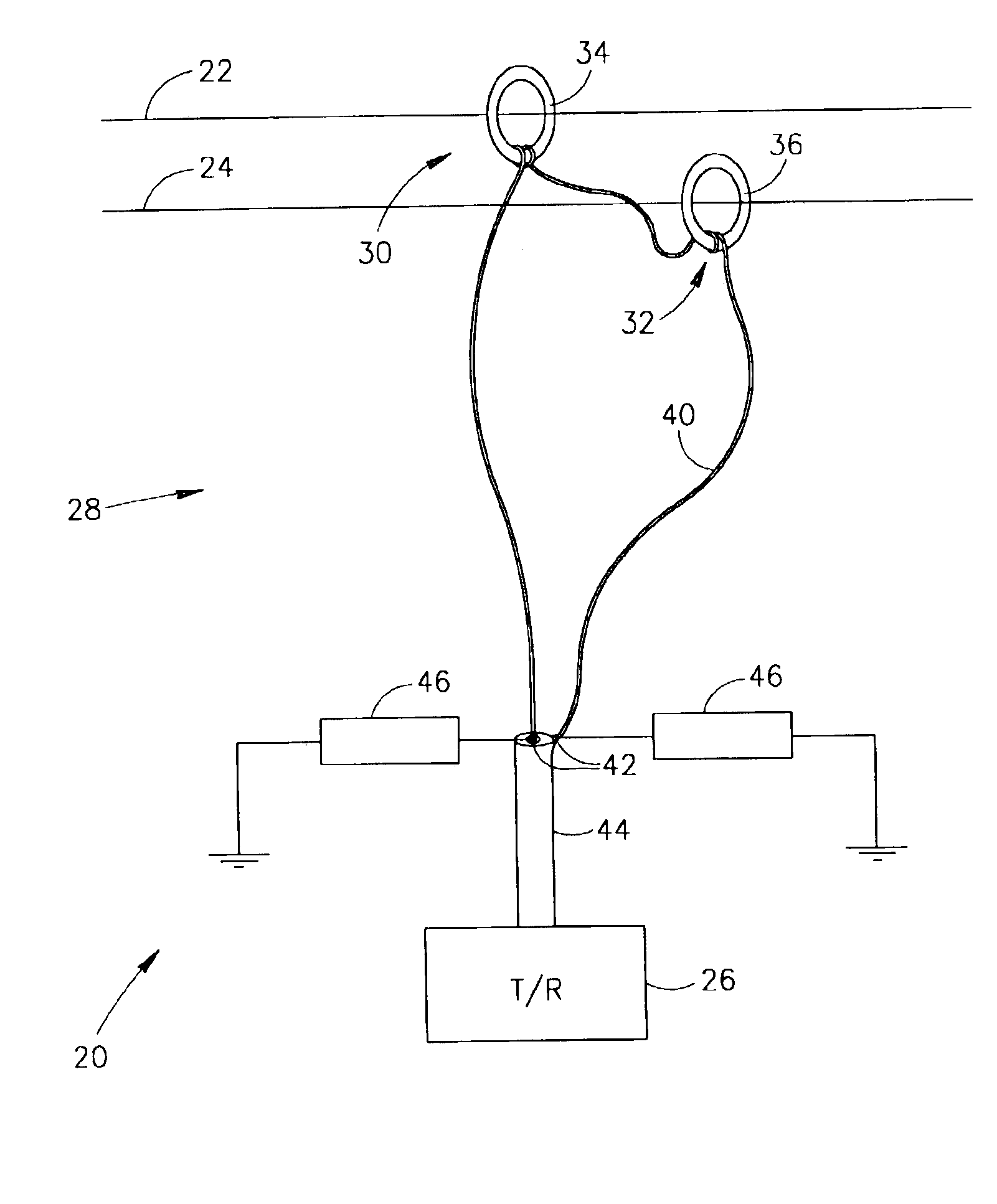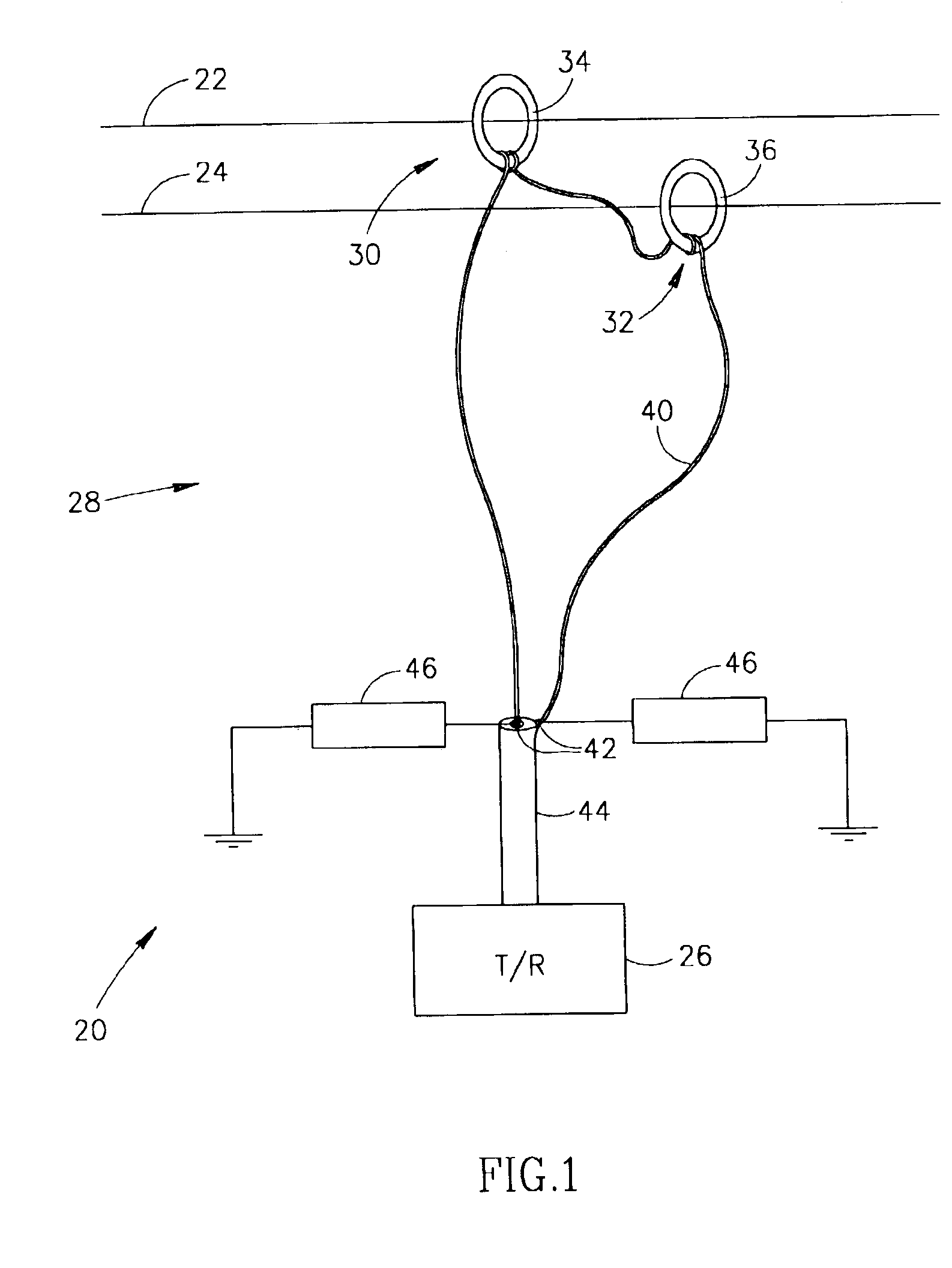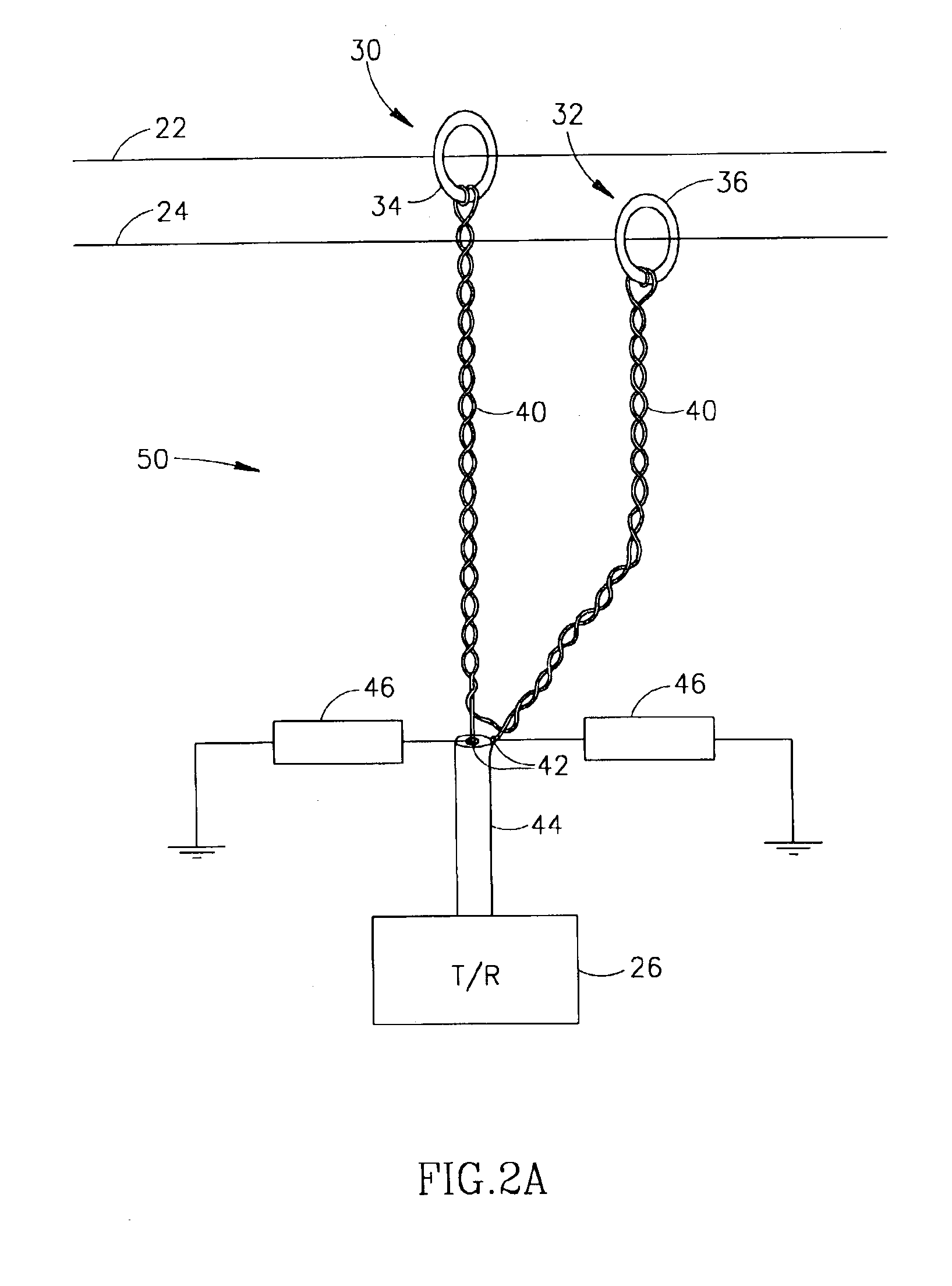Information transmission over power lines
a technology of information transmission and power lines, applied in the field of data transmission, can solve the problems of high cost, high cost, and inability to describe the operation of high-voltage power lines, and achieve the effect of maintaining a safe distance from the lin
- Summary
- Abstract
- Description
- Claims
- Application Information
AI Technical Summary
Benefits of technology
Problems solved by technology
Method used
Image
Examples
Embodiment Construction
[0057]FIG. 1 schematically shows a system 20 for transmitting data signals over a pair of lines 22 and 24 in a power line network, in accordance with an embodiment of the present invention. System 20 is suitable for transmitting signals over lines in low voltage as well as medium and high voltage power line networks. However, the system is expected to be particularly advantageous for use in transmitting signals over medium and high voltage power line networks, such as for example power line networks that carry voltages in voltage ranges above about 2 Kilovolts. By way of example, lines 22 and 24 are assumed to be above ground lines in a medium or high voltage power line network. Both lines 22 and 24 may be high voltage lines or one of lines 22 and 24 may be a neutral line in the power line network. Lines 22 and 24 generally run parallel to each other distanced by a safety distance required due to the voltage levels they carry. Although the present invention may be employed with line...
PUM
 Login to View More
Login to View More Abstract
Description
Claims
Application Information
 Login to View More
Login to View More - R&D
- Intellectual Property
- Life Sciences
- Materials
- Tech Scout
- Unparalleled Data Quality
- Higher Quality Content
- 60% Fewer Hallucinations
Browse by: Latest US Patents, China's latest patents, Technical Efficacy Thesaurus, Application Domain, Technology Topic, Popular Technical Reports.
© 2025 PatSnap. All rights reserved.Legal|Privacy policy|Modern Slavery Act Transparency Statement|Sitemap|About US| Contact US: help@patsnap.com



